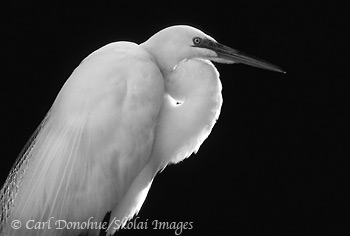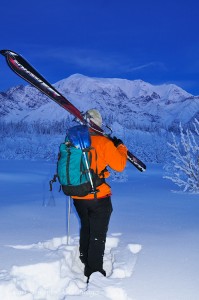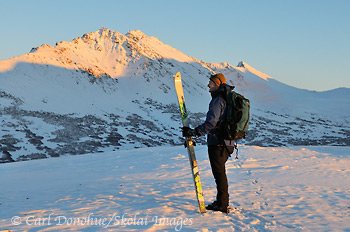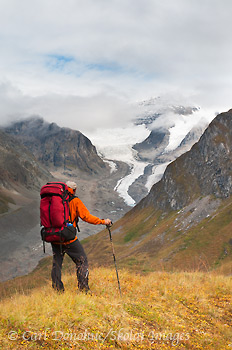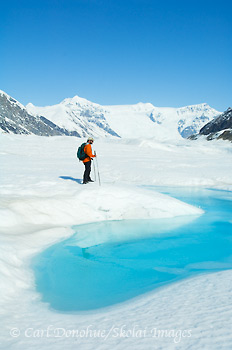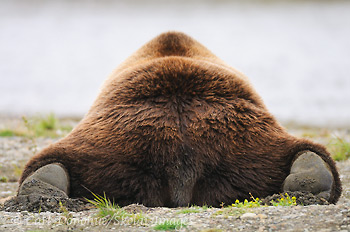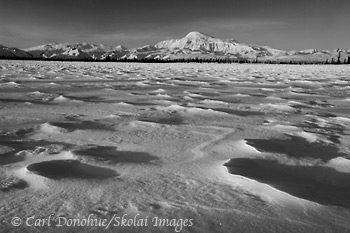
Black and white photo of Mount Sanford, one of the highest peaks in the Wrangell Mountains, at dawn, from a small frozen kettle pond. Winter snow creates patterns on the frozen lake. Mt. Sanford, Wrangell-St. Elias National Park and Preserve, Alaska. Please click on the thumbnail above to view a larger version of this photo.
Hey Folks,
Here’s an image of Mount Sanford, Wrangell-St. Elias National Park and Preserve, I took a while ago, that I converted to black and white in photoshop. I shot this after the alpenglow had faded, and the sun rose high enough in the sky to light up not just Mount Sanford’s massive peak, but the entire floor of the Copper River Basin.
It’s very easy to be tempted to pack up and head off after the alpenglow on a mountain wanes; I often find the light immediately following the alpenglow to be unappealing to me. The sky has a weird yellowish tint to it, and the contrast between the dark, shaded foreground and the brightly lit peak is too great to really photograph well; for me, anyway. Continue reading
